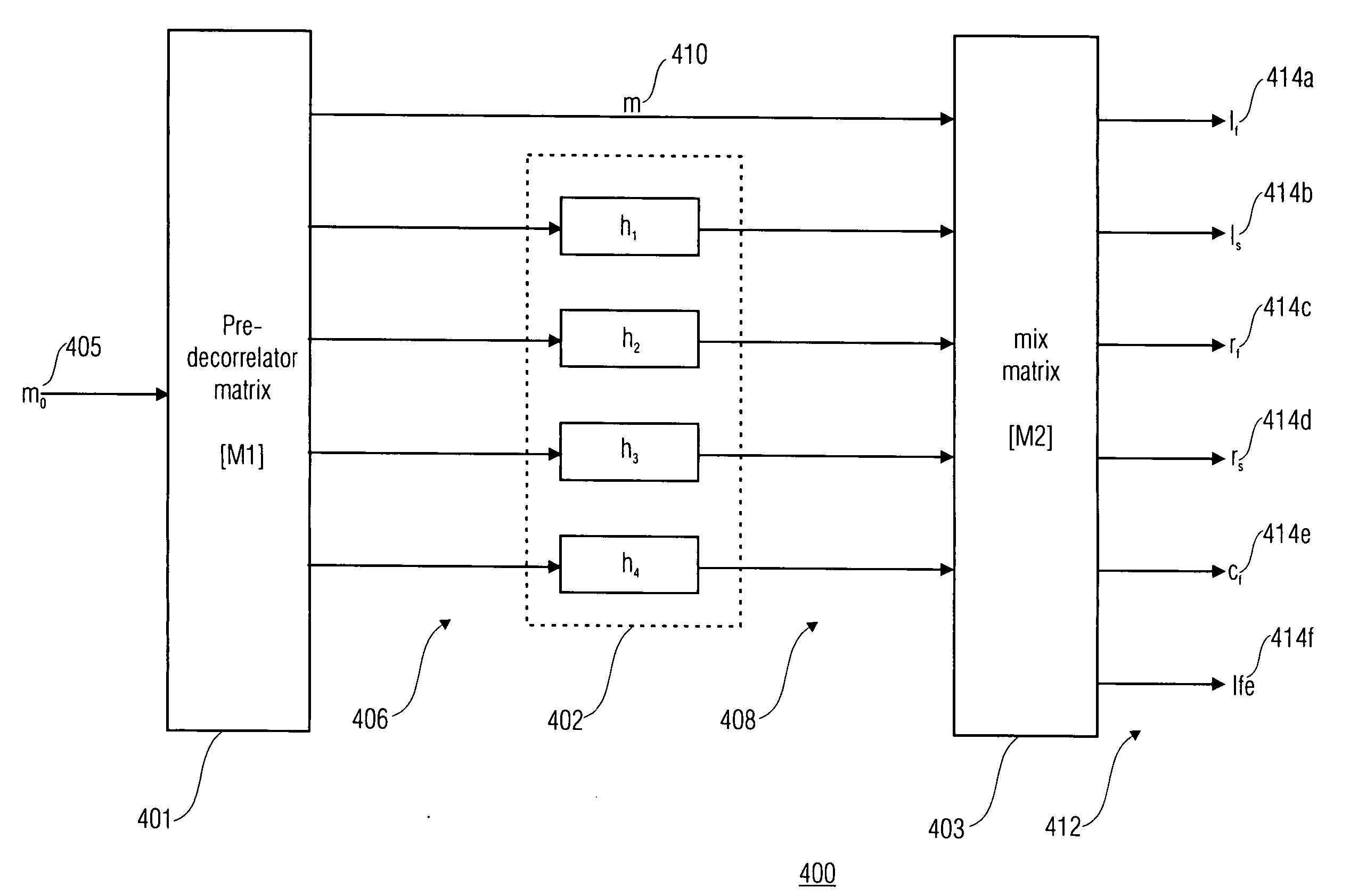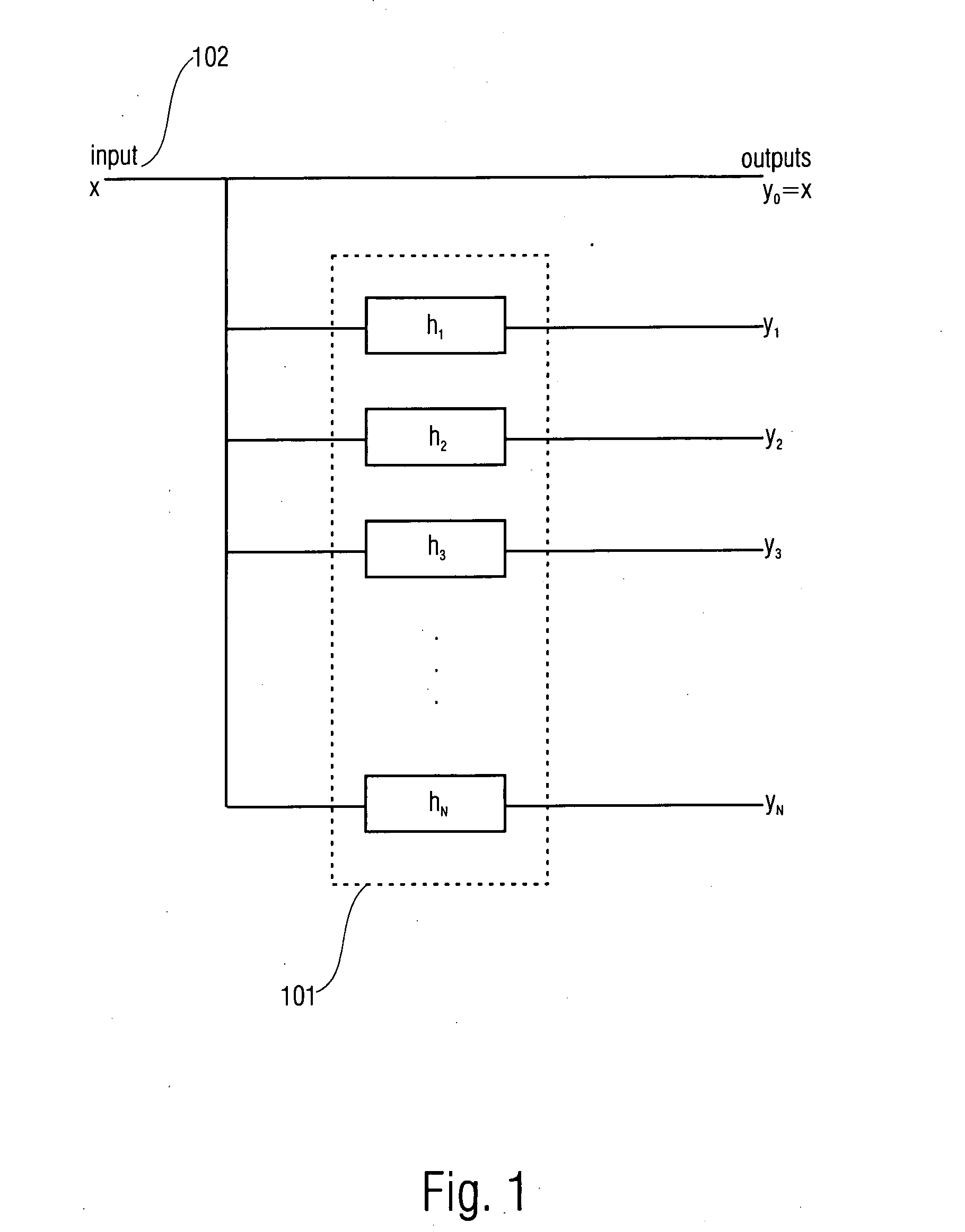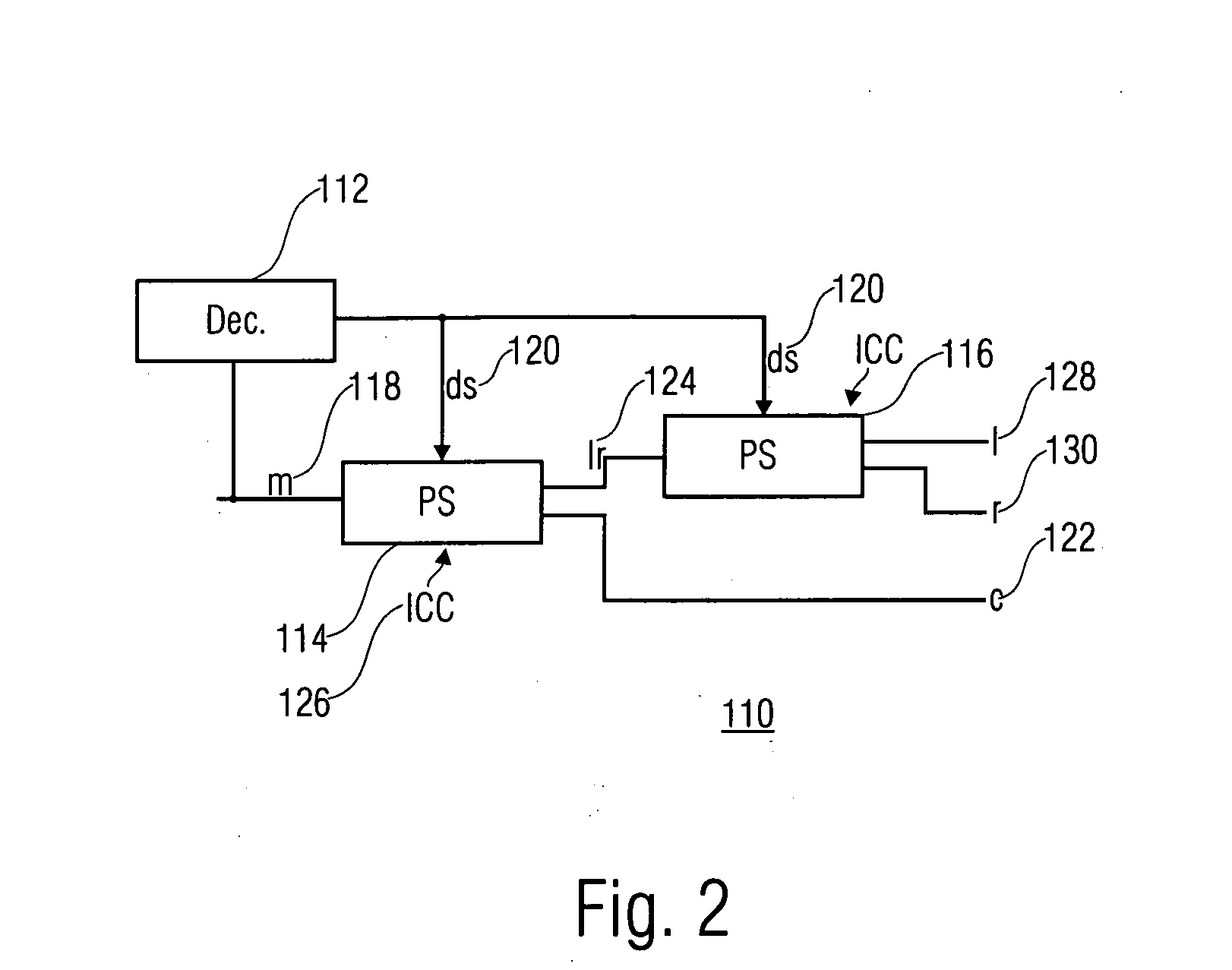Audio coding using de-correlated signals
a multi-channel audio and coding technology, applied in the field of multi-channel audio coding, can solve the problems of reducing the naturalness of the original, comb filtering often gives undesirable “metallic” sound, and non-all-pass response after addition of non-processed signals, so as to enhance the perceptual quality of the reconstructed signal
- Summary
- Abstract
- Description
- Claims
- Application Information
AI Technical Summary
Benefits of technology
Problems solved by technology
Method used
Image
Examples
Embodiment Construction
[0057] The embodiments described below are merely illustrative for the principles of the present invention for advanced methods for creating orthogonal signals. It is understood that modifications and variations of the arrangements and the details described herein will be apparent to those skilled in the art. It is the intent, therefore, to be limited only by the scope of the impending patent claims and not by the specific details presented by way of description and explanation of the embodiments herein.
[0058]FIG. 1 illustrates an inventive apparatus for the de-correlation of signals as used in a parametric stereo or multi-channel system. The inventive apparatus includes means 101 for providing a plurality of orthogonal de-correlated signals derived from an input signal 102. The providing means can be an array of de-correlation filters based on lattice IIR structures. The input signal 102(x) can be a time-domain signal or a single sub-band domain signal as e.g. obtained from a comp...
PUM
| Property | Measurement | Unit |
|---|---|---|
| transmission | aaaaa | aaaaa |
| frequency | aaaaa | aaaaa |
| DFT | aaaaa | aaaaa |
Abstract
Description
Claims
Application Information
 Login to View More
Login to View More - R&D
- Intellectual Property
- Life Sciences
- Materials
- Tech Scout
- Unparalleled Data Quality
- Higher Quality Content
- 60% Fewer Hallucinations
Browse by: Latest US Patents, China's latest patents, Technical Efficacy Thesaurus, Application Domain, Technology Topic, Popular Technical Reports.
© 2025 PatSnap. All rights reserved.Legal|Privacy policy|Modern Slavery Act Transparency Statement|Sitemap|About US| Contact US: help@patsnap.com



